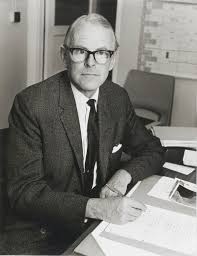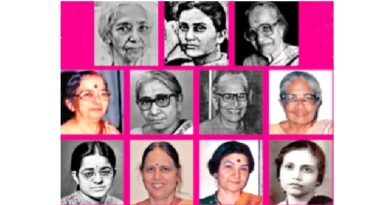The story of a Surgeon who discovered Lymphoma Cancer : Denis Parsons Burkitt
Denis Parsons Burkitt, (born Feb. 28, 1911, Enniskillen, N.Ireland.—died March 23, 1993, England), British surgeon and medical researcher.
The year was 1957. A middle aged surgeon was working in Uganda, in the Mulago hospital in Kampala.He was a devout Christian and considered himself a missionary. By his own admission, he wasn’t a great surgeon.What he lacked in surgical genius, he made up for in tenacity.
One day a boy named Africa walked into his clinic. The malnourished boy had a large swelling in his jaw-making him look grotesque. In a few days, the boy died of his tumor. A couple of weeks later another boy walked into his clinic, with the same kind of swelling and met the same end eventually. The surgeon was intrigued – by the striking similarity of the cases and the ferocity of the tumor. He decided to investigate.
He had a handicap though – a stray bouncer had damaged one of his eyes permanently during an adolescent cricket match. He was aging and was working in Sub Saharan Africa -far from where the limelight usually shone in medicine. He had no funds or great expertise to draw upon. The people he treated were poor and wanted some solace for their pain, not fancy research.
Nevertheless with characteristic zeal, he asked around if doctors had seen similar cases. They said yes – so he pored over the records and to his astonishment found several similar cases, all of them ending in death. No one had connected the dots till then. He then looked at the literature – sure enough, there was an article about a similar tumor in 1901 in an obscure tropical medicine journal. The tumor he had seen wasn’t new. The pathologists had reported each of these tumors as sarcoma.
He quickly wrote a manuscript titled “A sarcoma involving the jaws in African Children” and posted it to the British Journal of Surgery. The reply never came.
By sheer accident, he met a physician called Oettle in South Africa. Oettle was younger and his star was on the ascent. By now the surgeon had collected grim photos of his patients. He showed Oettle and asked about similar cases in South Africa. Oettle waved his hand and said these cases didn’t exist in South Africa.
With no formal training in epidemiology, the surgeon decided to send out questionnaires with the photos to doctors across the country. The pace was excruciatingly slow – it took around 4 years for 400 responses. Armed with the information, he represented each case with a pin on a map. Since he couldn’t afford colored pins, he painted the pins with his daughter’s paint himself. A pattern was emerging. The tumor seemed to have a geographical distribution.
He presented his finding in Middlesex. Little did he know that his presentation would trigger a multinational effort against a common enemy.Among the audience was a man named Tony Epstein, a British pathologist. The idea of an infectious agent causing the tumor began to emerge. There were skeptics – unlike other infections, there are no cancer epidemics. Nor did the brothers and sisters of these unfortunate children get the disease. What kind of infectious agent behaved like this?
The surgeon decided to do a ‘geographical biopsy’. He applied for funds and got a 15 pound grant from the British government. With that and the help of his friend, he took an old four wheeler, repaired it and started on a long Safari. In sweltering heat, he would travel to Johannesburg and then back to Kampala, covering a total of 12 countries! In each place, he collected data (even before that term became entrenched in medical literature). On a hunch,he got external review of the old slides. The results surprised him. The tumors were neither sarcomas nor carcinomas. The originated from lymphoid tissue- a lymphoma. Under the magnification of a microscope, these small round cells resembled a starry sky.After a wide-ranging study of hospital and physicians’ records across the continent, he was able to demonstrate that Burkitt’s Lymphoma (as it is now known) commonly occurs only in mosquito-ridden parts of equatorial Africa, in regions where malaria and yellow fever are also endemic. This research suggested that some insect vector was the carrier of an infectious agent responsible for the disease.
Tony quickly enlisted the help of his friend Yvonne Barr. Since they couldn’t isolate the infectious agent – it was too small – they decided to try a different approach. They looked for antibodies to the small infectious agent – presumably a virus. Sure enough almost all the cases had antibodies directed against this agent and it even stained the tumor cells. At long last, they had discovered the first human cancer caused by virus, one that bears their name – the Epstein Barr Virus (the cause of acute infectious mononucleosis) which is in children whose immune system is depressed by chronic malaria.
Meanwhile the surgeon’s name became popular in medical circles and he received an offer to try methotrexate in these children from Sloan Kettering. To his amazement the tumor melted in these children. It returned in some. So he begged for cyclophosphamide from an American manufacturer, which managed to hold the emperor of all maladies at bay even if for a short while.Burkitt later helped in developing an effective chemotherapy treatment for the lymphoma.
Aside from his work in tropical medicine, Burkitt was best known to the general public for his theory that a high-fibre diet helps protect against colon cancer and other diseases. His book Don’t Forget Fibre in Your Diet (1979) helped trigger public interest in maintaining adequate levels of fibre in daily nutrition.
This is the story of how within a decade a cancer was discovered, its morphological fingerprint identified, its geography delineated, its causative agent discovered and its treatment started.It is the story of how an one eyed Irish surgeon, saw what all others had missed. It is a story of discovery that spans several continents in the face of impossible odds. It is a story that shows than even the ordinary can achieve great things with perseverance.
So whenever we feel overwhelmed that we are in some remote no man’s land fighting a lone battle, remember this surgeon.
The name is Burkitt. Denis Parsons Burkitt.


